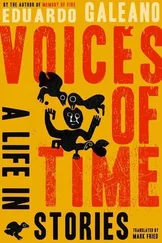Walker imposes Louisiana’s constitution on Nicaragua, reestablishing slavery, abolished in all Central America thirty years previous. He does so for the good of the blacks, because “inferior races cannot compete with the white race, unless they are given a white master to channel their energies.”
This Tennessee gentleman known as “the Predestined” receives orders directly from God. Gruff, grim, always dressed in mourning, he leads a band of mercenaries recruited on the docks who claim to be the Knights of the Golden Circle and like to be called, modestly, the Phalange of Immortals.
“Five or none,” Walker proclaims, as he sets out to conquer all Central America.
And the five Central American countries, divorced, poisoned by mutual rancor, recover their lost unity, at least for a while: they unite against the invaders.
And the Immortals die.

In 1821, the American Colonization Society bought a piece of Africa.
In Washington the new country was christened Liberia and its capital was called Monrovia, in honor of James Monroe, who at the time was president of the United States. Also in Washington, they designed the flag to be just like their own, except with a single star, and they elected the country’s government. Harvard drew up the constitution.
The citizens of the newborn nation were freed slaves, or rather slaves expelled from the plantations of the southern United States.
No sooner did they set foot in Africa than those who had been slaves became masters. The native population, “those jungle savages,” owed obedience to the newcomers, who had suddenly risen from the bottom to the top.
Backed by cannon, they took over the best lands and claimed the exclusive right to vote.
Later on, with the passing of the years, they granted rubber concessions to Firestone and Goodrich, and gave away the oil, iron, and diamonds to other U.S. companies.
Their descendants, 5 percent of the population, continue running this foreign military base in Africa. Every so often, when the poor masses get rowdy, they call in the Marines to restore order.

She learned to read by reading numbers. Playing with numbers was her favorite pastime and at night she dreamed of Archimedes.
Her father forbade it:
“Such things are not for women,” he said.
When the French Revolution set up the Polytechnic School, Sophie Germain was eighteen. She wanted to go. They shut the door in her face:
“Such things are not for women,” they said.
By herself, she studied, researched, invented.
She sent her work by mail to Professor Joseph-Louis Lagrange. Sophie signed it Monsieur Antoine-August LeBlanc, and thus kept the most excellent professor from responding:
“Such things are not for women.”
They had been writing back and forth, mathematician to mathematician, for ten years when the professor discovered that the he was a she.
From that point on, Sophie was the only woman allowed into Europe’s masculine Olympus of science: in mathematics she probed theorems, and later on in physics she revolutionized the study of elastic surfaces.
A century later, her contributions helped make possible the Eiffel Tower, among other things.
The names of several scientists are inscribed on the tower.
Sophie’s is not there.
Her death certificate from 1831 says she was a bondholder, not a scientist:
“Such things are not for women,” the clerk said.

At eighteen, she runs away in the arms of her tutor.
At twenty, she marries, or is married, despite her notorious incompetence in domestic matters.
At twenty-one, she begins studying mathematical logic on her own. Not the most appropriate occupation for a lady, but her family indulges her. Maybe that way she will stay in her right mind, and stave off the insanity that her father’s genes have in store for her.
At twenty-five, she invents a foolproof system based on probability theory for winning at the racetracks. She bets the family jewels. She loses everything.
At twenty-seven, she publishes a revolutionary paper. She does not put her name to it. A scientific paper by a woman? That publication makes her the first programmer in history: it lays out a new method for setting up a machine to undertake repetitive tasks and save textile workers from the drudgery of routine.
At thirty-five, she falls ill. The doctors diagnose hysteria. It is cancer.
In 1852, at the age of thirty-six, she dies. At that very age her father, the poet Lord Byron, whom she never saw, also died.
A century and a half later, in homage to her, one of the languages for programming computers is named Ada.

In 1847, three novels excite England’s readers.
Wuthering Heights by Ellis Bell tells a devastating tale of passion and shame. Agnes Grey by Acton Bell strips bare the hypocrisy of the family. Jane Eyre by Currer Bell exalts the courage of an independent woman.
No one knows that the authors are female. The brothers Bell are actually the sisters Brontë.
These fragile girls, virgins all, Emily, Anne, Charlotte, avenge their solitude by writing poems and novels in a village lost on the Yorkshire moors. Intruders into the male world of literature, they don men’s masks so the critics will forgive them for having dared. But the critics pan their works anyway, as “rude,” “crude,” “nasty,” “savage,” “brutal,” “libertine”. .

Flora Tristán, grandmother of Paul Gaugin, errant activist, revolution’s pilgrim, dedicated her turbulent life to fighting against a husband’s right of property over his wife, a boss’s right of property over his workers, and a master’s right of property over his slaves.
In 1833, she traveled to Peru. On the outskirts of Lima she visited a sugar mill. She saw the stones that ground the cane, the kettles that boiled the molasses, the refinery that made the sugar. Everywhere she looked, she saw black slaves coming and going, working in silence. They were not even aware of her presence.
The owner told her he had nine hundred. In better times, twice as many, he complained.
And he said everything he was expected to say: that blacks were lazy like Indians, that they only worked under the lash, that. .
When they were leaving, Flora came across a lockup to one side of the plantation.
Without asking permission, she went inside.
There, in the utter darkness of a dungeon, she managed to make out the figures of two women, naked, crouching in a corner.
“They’re worse than animals,” the guard said scornfully. “Animals don’t kill their young.”
These slaves had killed their young.
The two gazed at her, who gazed back at them from the other side of the world.

She spent her life struggling heart and soul against the hell of jail and for the dignity of women imprisoned in jails disguised as homes.
An opponent of collective absolution, she called a spade a spade.
“When it is everyone’s fault, it is no one’s,” she liked to say. She earned herself a few enemies this way. Over the long term her prestige became indisputable, though her country had a hard time accepting it. And not only her country, her times too.
Читать дальше


















